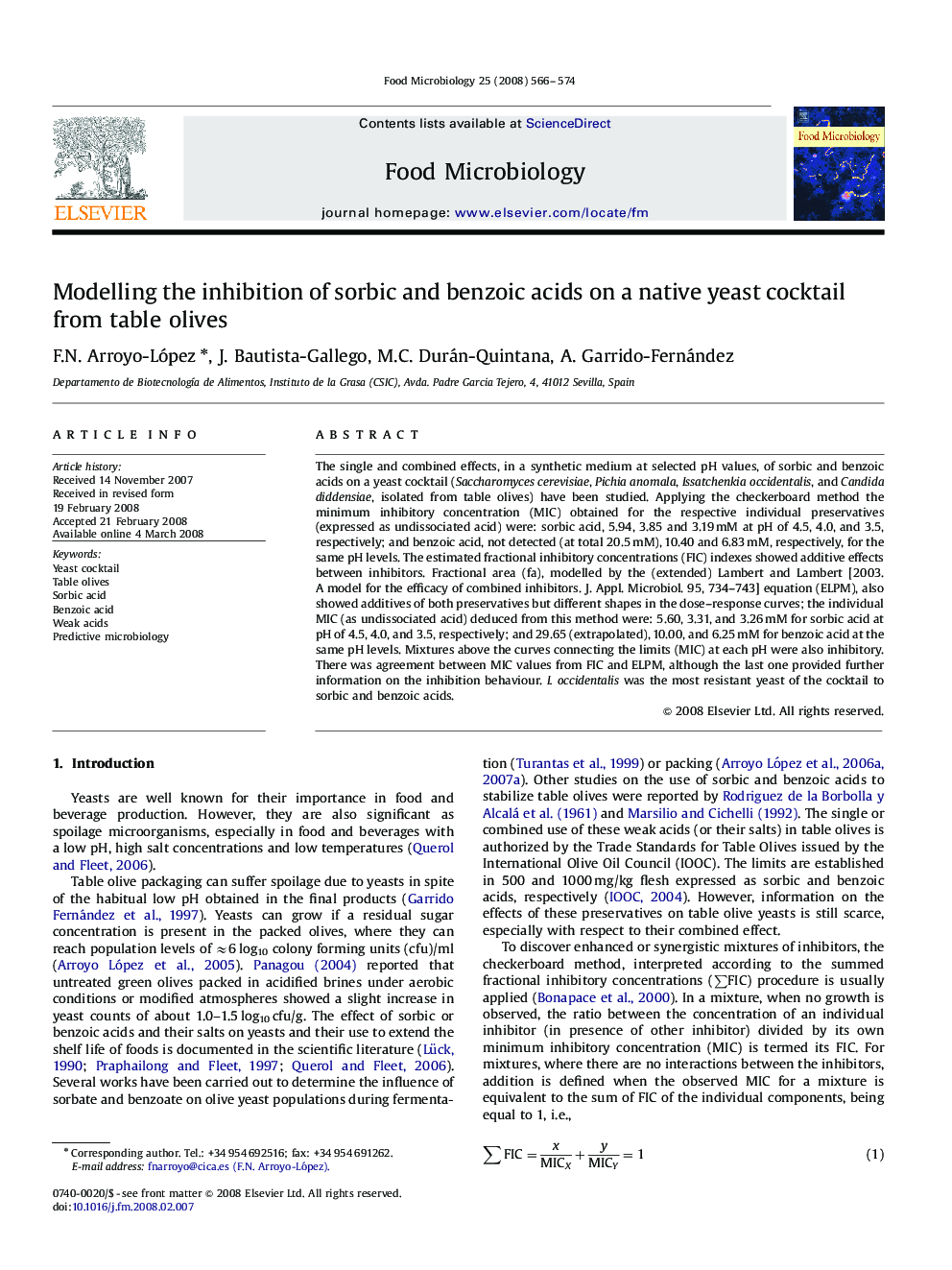| Article ID | Journal | Published Year | Pages | File Type |
|---|---|---|---|---|
| 4363878 | Food Microbiology | 2008 | 9 Pages |
The single and combined effects, in a synthetic medium at selected pH values, of sorbic and benzoic acids on a yeast cocktail (Saccharomyces cerevisiae, Pichia anomala, Issatchenkia occidentalis, and Candida diddensiae, isolated from table olives) have been studied. Applying the checkerboard method the minimum inhibitory concentration (MIC) obtained for the respective individual preservatives (expressed as undissociated acid) were: sorbic acid, 5.94, 3.85 and 3.19 mM at pH of 4.5, 4.0, and 3.5, respectively; and benzoic acid, not detected (at total 20.5 mM), 10.40 and 6.83 mM, respectively, for the same pH levels. The estimated fractional inhibitory concentrations (FIC) indexes showed additive effects between inhibitors. Fractional area (fa), modelled by the (extended) Lambert and Lambert [2003. A model for the efficacy of combined inhibitors. J. Appl. Microbiol. 95, 734–743] equation (ELPM), also showed additives of both preservatives but different shapes in the dose–response curves; the individual MIC (as undissociated acid) deduced from this method were: 5.60, 3.31, and 3.26 mM for sorbic acid at pH of 4.5, 4.0, and 3.5, respectively; and 29.65 (extrapolated), 10.00, and 6.25 mM for benzoic acid at the same pH levels. Mixtures above the curves connecting the limits (MIC) at each pH were also inhibitory. There was agreement between MIC values from FIC and ELPM, although the last one provided further information on the inhibition behaviour. I. occidentalis was the most resistant yeast of the cocktail to sorbic and benzoic acids.
